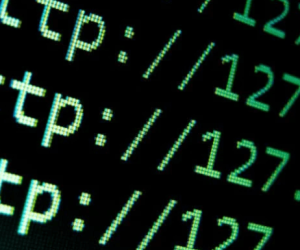Healthcare cybersecurity during the COVID-19 pandemic is concerning on account of rising cyber-threats and privacy breaches targeting vulnerable systems globally. Cybercrime quickly adapts to changes in every worldwide situation. When the COVID-19 pandemic started, malware cyber attackers identified common vulnerabilities, and they exploited their vulnerabilities by attempting attacks.
Healthcare providers must be prepared to stop cyberattacks to protect the availability of essential health services as well as the confidentiality of medical information, and here is where software solutions for healthcare might come in handy.
What exactly are the COVID-19 healthcare cybersecurity issues and solutions?
Top 10 Cybersecurity Issues for Telehealth
There are three types of cyberattacks occurring during the COVID-19 pandemic. These three common cybersecurity issues are:
- Scams and phishing
- Malware
- Distributed denial-of-service (DDoS)
The Advanced Persistent Threat (APT) and other cyber-criminal groups perform COVID-19 related cyberattacks such as scams and phishing at vulnerable healthcare organizations. These cybercriminal groups are taking advantage of the pandemic for various motivations. For example, they collect information related to COVID-19 vaccines by establishing different strategies such as malware, phishing, or ransomware.
1. Data theft
Patients’ records include all the personal data necessary for identify theft and subsequent crime. Using electronic communications tools, cloud storage, and video conferencing without sufficient encryption and security increases the risk of putting your patients’ personal data at risk.
2. Distributed Denial-of-Service (DDoS)
DDoS is the most indefensible cyberattack on online servers today, as it makes a significant impact on its victims. A distributed denial-of-service attack exploits various attack sources, compared to previous denial-of-service (DoS) attacks. DDoS is being spread using numerous hosts to start a correlated DoS attack against multiple targets, which effectively intensifies the attack and makes defense more complicated.
3. Scams
Cyber scams are hoaxes that trick people into giving away personal data, login credentials, or money. Scammers target businesses and individuals, making it critical that you educate yourself, your staff, and your patients about protecting PHI.
4. Phishing
Phishing is the most common type of cyberattack. Based on recent statistics, the success rate of phishing attacks is 30% or higher. Email, voice, and SMS are examples of phishing attacks targeting vulnerable healthcare organizations’ systems by enticing them with COVID-19 related topics.
According to KnowBe4, there was a 600% increase in COVID-19 related phishing email attacks in Q1 of 2020. Cybercriminals use more subtle ways to lure victims, such as HTTPS encryption protocols in their websites — 75% of phishing sites have SSL. Moreover, Software-as-a-Service (SaaS) and webmail are the most targeted phishing sectors.
5. Malware
Malware includes spyware, a Trojan horse, computer viruses, worms, and ransomware. During the COVID-19 pandemic, APT and other cybercriminal groups have exploited systems by spreading multiple viruses and malware through emails and websites. Certain types of malware, such as ransomware, are more effective for institutions heavily involved in dealing with the pandemic.
6. Hacking
Healthcare data is incrediblty valuable. With the increased availablity of telehealth services, including data transfers, the risk of hacking is higher than ever. A hacker can identify and target unsecured electronic communicatioins and simply take the information they want. Healthcare providers are at risk of hackers looking for unpatched systems and other vulnerabilities who want to steal and sell data for healthcare fraud or identity theft.
7. Fraud
Speaking of fraud, remember that your cybersecurity risks aren’t limited to external hackers. Upcoding, service misrepresentation, and billing for services not rendered are types of fraud that are more common with telemedicine than in-person care.
8. Zoom-bombing
Zoom has taken steps to increase its security and become more aligned with HIPAA regulations. However, zoom-bombing (entering or disrupting a Zoom session) can still interfere with cyber security and damage your organization’s reputation. Make sure to use the waiting room function and lock your meeting to maximize security.
9. Ransomware
Ransomware blocks access to a computer system until a specified sum of money is paid to the hacker. Ransomware attacks have been a threat to American businesses for several years now. However, the healthcare industry is increasingly at risk. A wave of ransomware attacks that began in 2020 targeted some of the biggest hospital chains in the country.
10. EHR Outages
An EHR outage is a common ransomware threat. Your organization not only needs to access patient data, but also must protect PHI. An EHR outage can have dire consequences for your business and your patients
How do you protect your healthcare practice from cyberattacks during COVID-19 and beyond?
It is important for medical practices to take a comprehensive approach to cybersecurity with solutions — during the COVID-19 pandemic and thereafter. Some of the examples of a comprehensive approach to cybersecurity include risk management, CERT Resilience Management Model (CERT-RMM), and integrating cybersecurity into budgeting and strategic planning. It is crucial that healthcare organizations improve the protection of their data and assets from cyberattacks by leveraging their defenses.
To improve cybersecurity in healthcare, you can follow these tips and prevent getting victimized by cybercriminals:
- Use a firewall
- Install an antivirus software
- Use strong passwords
- Enable two-factor authentication
- Install a secure virtual private network (VPN)
- Install anti-malware software on all network-connected devices
From the confidentiality of patient information to insurance rates for patient care, cybersecurity influences every aspect of medical practices. Healthcare organizations must invest in a cost-effective and innovative telemedicine software to ensure security and seamless workflow in their practices.
To protect your health system during COVID-19 and when using telehealth, get Curogram
With Curogram, you can update to a more secure healthcare software in your practice.
Curogram is an easy-to-use HIPAA-compliant patient-engagement software that protects both your patient’s information and your practice from harm (cyberattacks) and potential financial loss. By using the software, you can continually develop effective strategies while keeping health records and other sensitive data safe, even when communicating over texts with patients. It’s an effective solution to cybersecurity issues.



